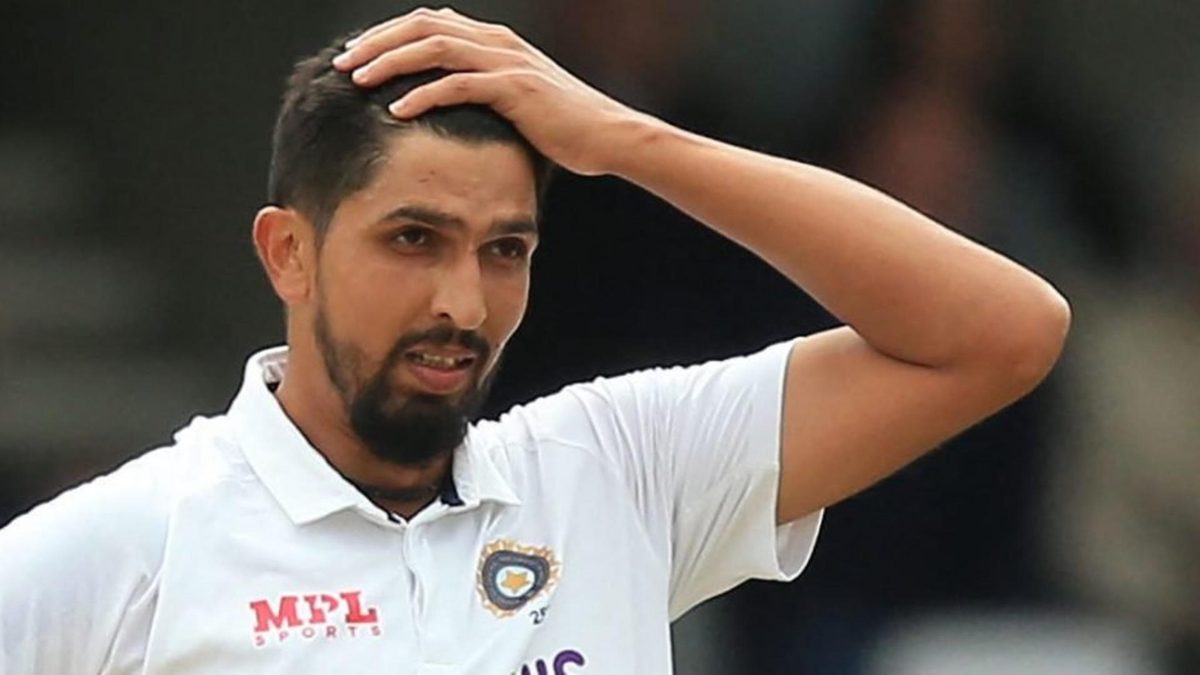
Ishant Sharma has had a horrible Test match, but Rohit Sankar highlights why this could well be a blip for one of world cricket’s best bowlers in the last few years.
“Ishant obviously a big fan of @thehundred, keen to bowl 10 first up” – Jimmy Neesham sarcastically tweeted as Ishant Sharma sent down two no-balls and a wide in the first four deliveries he ran up to bowl in the England innings. The fifth, a short and wide one, was hammered through square by Haseeb Hameed, who seemed pretty tentative in his first Test in five years at Lord’s last week, but was eased back into things by a wayward show from India’s senior bowler.
Two days into the Test match, Ishant’s figures make for unimpressive reading: 22-0-92-0. As alarming as the zero against the wickets column is, it is the zero against the maidens column that India should be worried about. Ishant 2.0, the one that seemed like a far cry from the Ishant who had been fodder for trolls, has been a sharp operator, who isn’t just restrictive with the ball, but picks up wickets with the fuller delivery.
The transformation, when it came, came about quickly. We have read about the work Jason Gillespie did to improve Ishant’s fuller length balls and how Bharat Arun shaped him into India’s attack leader in Test cricket.
“Ishant Sharma was predominantly bowling very economical spells, but he was not getting too many wickets, because the batsmen were leaving him, so he’s just gone a little wider and said he’s going to make them play a lot more,” Bharat Arun, India’s bowling coach, said in an interview with The Cricket Monthly, highlighting Ishant’s change.
“With that angle, if you say, bowl there, automatically a bowler will change his wrist position, and that will ensure he is swinging the ball. And when the ball is moving, he becomes even more dangerous to left-handers from round the wicket. Angles in and then moves out, which makes it very, very difficult.”
Both bits of coaching work done on him point to one direction – a focus on making the technical part of his bowling perfect. For three years, Ishant steamed in to bowl; perfect run-up, strong wrist positions, ideal release points, sturdy at the crease, balanced body positions and the perfect length. He did better than most bowlers. This isn’t just from observation. Stats back up this claim.
Ishant seems to have gone slightly more round arm recently. Ishant today (left) vs 2018 England (right). Not sure what the reasons behind this might be. pic.twitter.com/JB6CFyUMii
— Cricket With Ash (@CricketWithAsh) August 14, 2021
Since the start of 2018 (and before this Test), Ishant’s bowling average is 19.64, next only to Jason Holder (19.17) among bowlers with at least 50 wickets. He has five-wicket hauls in India, England, New Zealand and West Indies, as diverse as conditions get. For someone who had, for so long, failed to hit his straps, Ishant fell right into groove and became an integral part of the Indian attack in these three years. Much of that hinged on his rhythm and how he found the right harmony with the several elements of his bowling that seemed to be in mutiny before.
On Wednesday, most of that went wrong. Again. His run up looked so off that it sparked a discussion on social media. His lengths went shorter and his rhythm seemed completely off. An attack leader that Virat Kohli had diligently trusted with the new ball, Ishant wasn’t handed the new cherry when the second new ball became available on day two. For three years since 2018, Ishant had taken the first new ball more times than any other Indian bowler. He had also taken more wickets inside the first 10 overs an innings more than any other Indian bowler, notably at strike rate even better than James Anderson, arguably the new-ball king of these times.
On Thursday, as he gingerly strolled in to bowl in the final few minutes of play, it was a hard sight to watch. This wasn’t the Ishant Indian fans had warmed to in the last few years, rather a throwback to the wayward ‘twin brother’, as someone described him, of past. The final ball of the day perhaps summed up the frustration best: a booming inswinger from Ishant that struck the batter’s pad and excited Kohli to call for the DRS only for the third umpire to call it off after the replays showed a huge inside edge.
It is still too early to say what this dip means. Rhythm is a strange thing, that can go in an instant, but return just as quickly. Only in the coming days and weeks will it become clear if this is a one-off or something more concerning. What is clear is that Ishant has earned some faith. This could just be a blip in an otherwise blemish-free record in the last few years. And until we know different, the jokes and memes can wait.








